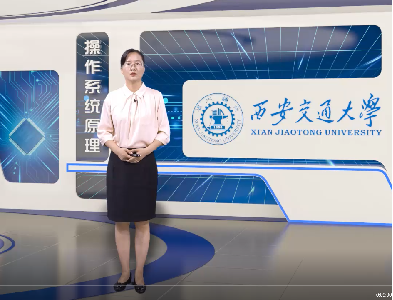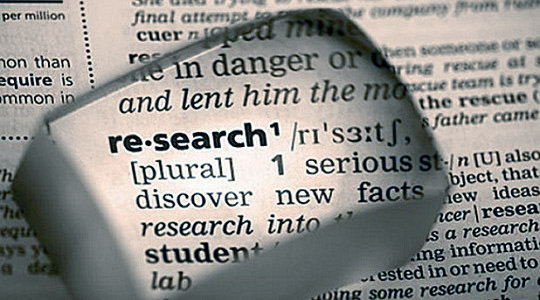
当前课程知识点:Western and Chinese Art: Masters and Classics > 5.Grief and Transcendence: Wang Xizhi and Gu Kaizhi > 5.4 Wang Xizhi and his unrivalled attainment in calligraphy > Wang Xizhi and his unrivalled attainment in calligraphy
返回《Western and Chinese Art: Masters and Classics》慕课在线视频课程列表
返回《Western and Chinese Art: Masters and Classics》慕课在线视频列表
我们主要讲
王羲之和他伟大的书法艺术
谈到书法
我们前面已经介绍了
中国文字的书写早在
商周时代就开始了
而且主要是刻画在甲骨文上的
在甲骨文之后
中国的文字书写经历了
由篆书向隶书的演变
这个演变呢主要是篆书是在
青铜器上铭刻的文字
所以又称为铭文(又称金文)
在篆书之后隶书的产生
主要是由于毛笔的发现
和使用的材质
即纸张的生产
那么从篆书到隶书我们会看到
笔画更为自然随意
更具有我们所说的书法的
情感的表现性
现在我们具体来介绍王羲之
王羲之是生活于东晋时代的
我们中国最伟大的书法家
王羲之不仅以他伟大的书法作品
成为我们后世千百年来
无限敬仰的艺术家
而且以他丰富多彩的人生给
我们中国文化增添了精彩的一笔
关于王羲之有这么几个故事
是我们大家要知道的
他是一个集书法天才和勤学苦练
为一身的伟大的书法家
因为他从小非常艰苦的训练书法
所以他在少年时代
他的书法就已经成名
关于王羲之有两个故事
是我们理解他的书法必须要知道的
一个就是说
他书法功力超人的故事
这个故事叫入木三分
这个故事是说他在少年时代
在一块木板上写字
他写下的字
木工在雕刻的时候
发现笔墨浸透非常的深
这就是所谓入木三分
实际上是指王羲之的笔力深厚
第二个故事是东床快婿
这个故事是讲当时
郗鉴郗太傅要选女婿
派人到王家察看
察看的人回来说
王家五个子弟都不错
只有一个稍微差一点
这个子弟躺在东边床上
见我来了自顾自的吃东西
那么郗鉴听了报告就说
我要选的就是东边床上的这个女婿
那么这就是东床快婿的来历
郗太傅之所以选王羲之做女婿
看中的是他的潇洒随性
王羲之的潇洒随性也是他成为
一代伟大的书法家的
一个重要原因
当然
王羲之一方面在生活
当中是潇洒随性
另一方面呢
他在待人接物的时候却又是
非常的亲切随和
传说王羲之有一次出行
遇到一个老太太在山路边卖扇子
问询知道老太太的扇子很难卖出去
王羲之就说 把您的扇子都拿来
我给你写上几个字就好卖了
这老太太说 不写字我还卖不掉
你写了字我怎么卖
王羲之说 你不用管
你尽管说这是王羲之写的字
果然
王羲之为这个老太太
写上字的扇子非常好卖
但到第二天呢这个老太太
专程赶来找王羲之
让他再为她写字
王羲之就说 你已经得了这么多钱
我就不再给你写字了
这就是王羲之
王羲之在生活当中
也是极富情趣的人
他一生中特别钟爱的是鹅
据说有一次他听说一个
老太太家中有一只很美的鹅
他就非常郑重的带着幕僚
几十里路赶去要买这个老太太的鹅
而老太太听这个报信的人说
王大人是为她的鹅而来
结果就早早的把鹅宰杀了
炖好
王羲之到时
看到的是被端上来的
一碗香喷喷的鹅肉
王羲之非常的遗憾
另一个关于王羲之爱鹅的传说是
王羲之听说一个老道士
养着一群美鹅
他就前去求购
这个老道士说 我不要你的钱
你帮我把《道德经》抄写一遍
我就免费把这些鹅送给你
《道德经》有5000字
王羲之就认认真真的
书写了一遍《道德经》
然后很快乐的领着
换来的鹅回家去了
王羲之一生很长时间
是在仕途上奔忙
他是一个极有口碑的好官
但是他又实在不愿忍受官场的交杂
所以他多次辞官
直到他53岁的时候
他坚决称病辞官
回到他的家乡绍兴
回到家乡之后
在绍兴的美丽的江南景色当中
他得到了人生最美好的归宿
所以他自称
在这片山水当中
吾卒当以乐死
这就是王羲之
一个有真性情
有豁达的心胸
对人生世界都亲切自然的人
正因为他这一番亲切自然
我们才可以看到他伟大的
书法作品《兰亭序》
-1.1Factual impairment between image and message
--Factual impairment between image and message
-1.2Relationship between Fact and Truth
--Relationship between Fact and Truth
-1.3The image revelry in the information age
--The image revelry in the information age
-1.4 Nature, animal and human body art
--Nature, animal and human body art
-1.5 Art: from concrete bodies to metaphorical constructions
--Art: from concrete bodies to metaphorical constructions
-1.6 On defining art
-1.7 Globalization and Consumerism
--Globalization and Consumerism
-1.8 Art and Anti-art
-1.9The value classics hold to the modern time
--The value classics hold to the modern time
-Homework1
-2.1 The occurrence of prehistoric art
--The occurrence of prehistoric art
-2.2 Mysterious cave mural paintings
--Mysterious cave mural paintings
-2.3 Symbolism of rock engravings
--Symbolism of rock engravings
-2.4 Expressive functions about prehistoric painting
--Expressive functions about prehistoric painting
-2.5 Aesthetic characters of prehistoric art
--Aesthetic characters of prehistoric art
-2.6 The tribal art of bodily operation
--The tribal art of bodily operation
-2.7 The construction to reach the heaven
--The construction to reach the heaven
-2.8 Immortal art in ancient Egyptian
-- Immortal art in ancient Egyptian
-Homework2
-3.1 The relationship between mythology and Greek culture
--The relationship between mythology and Greek culture
-3.2 The marks of the epics written by Homer
--The marks of the epics written by Homer
-3.3 Three greatest tragedy drammatists in Greece
--Three greatest tragedy drammatists in Greece
-3.4 The aesthetics woven into ancient Greek architecture
--The aesthetics woven into ancient Greek architecture
-3.5 The ancient Greek sculpture
-3.6 The Greek sculpture of the classic age
--The Greek sculpture of the classic age
-3.7 Works of Phidias
-3.8 The essence and verve of ancient Greek classical art
--The essence and verve of ancient Greek classical art
-Homework3
-4.1The beginning of Chinese painting and Calligraphy
--The beginning of Chinese painting and Calligraphy
-4.2 Majesty and divinity from bronze ware
--Majesty and divinity from bronze ware
-4.3 The Duke Mao Tripod and eternal characters
--The Duke Mao Tripod and eternal characters
-4.4The Philosophy of Chuang Tzu
--The Philosophy of Chuang Tzu
-4.5Qin Shi Huang’s Terracotta Warriors
--Qin Shi Huang’s Terracotta Warriors
-4.6The painting in the Han Dynasty
--The painting in the Han Dynasty
-4.7 The sculpture in the Han Dynasty
--The sculpture in the Han Dynasty
-Homework4
-5.1Master Chuang Tzu's impact on the Wei and Jin Dynasties
--Master Chuang Tzu's impact on the Wei and Jin Dynasties
-5.2Talking about Ji Kang
-5.3 The general spirit of the Wei and Jin Dynasties
--The general spirit of the Wei and Jin Dynasties
-5.4 Wang Xizhi and his unrivalled attainment in calligraphy
--Wang Xizhi and his unrivalled attainment in calligraphy
-5.5 A Preface to the Orchid Pavilion
-- A Preface to the Orchid Pavilion
-5.6 The penmanship of two famous calligraphers surnamed Wang
--The penmanship of two famous calligraphers surnamed Wang
-5.7Gu Kaizhi and his painting
-5.8 Great poet Tao Yuanming
-Homework5
-6.1The Chan School in the Tang dynasty
--The Chan School in the Tang dynasty
-6.2“Cursive King”: Zhang Xu
-6.3《Four Calligraphy Works of Ancient Poems》
--《Four Calligraphy Works of Ancient Poems》
-6.4Zhang Xu and Huai Su
-6.5Wu Daozi and his paintings
-6.6Wang Wei and Chinese landscape painting
--Wang Wei and Chinese landscape painting
-6.7The relation of painting and poetry
--The relation of painting and poetry
-Homework6
-7.1 The beginning of Renaissance: Giotto
--The beginning of Renaissance: Giotto
-7.2 Giotto’s naturalism
-7.3 The frescoes in the Arenal Chapel
--The frescoes in the Arenal Chapel
-7.4 The Renaissance artist in north Europe: Robert Campin
--The Renaissance artist in north Europe: Robert Campin
-7.5 The Ghent Altarpiece
-7.6 Jan Van Eyck’s secular paintings
-- Jan Van Eyck’s secular paintings
-Homework7
-8.1 The beauty of dawn during Renaissance
--The beauty of dawn during Renaissance
-8.2 The reproducer of nature: Da Vinci
--The reproducer of nature: Da Vinci
-8.3 The immortal work Mona Lisa
-8.4 The classicism of Raphael
-8.5 The Sistine Chapel ceiling
-8.6 The mythology and sculpture of Moses
--The mythology and sculpture of Moses
-8.7 Michelangelo's struggle between life and death
-- Michelangelo's struggle between life and death
-8.8 The perceptual Titian and Venice
--The perceptual Titian and Venice
-Homework8
-9.1Rubens and the Baroque Art
-9.2Poussin and his classical spirit
--Poussin and his classical spirit
-9.3Rembrandt and his aptitude of wielding light and shadow
--Rembrandt and his aptitude of wielding light and shadow
-9.4 Rembrandt in his self-portrait
--Rembrandt in his self-portrait
-9.5 Vermeer and his painting
-Homework9
-10.1Landscape painting from the Five Dynasties period to the Northern Song Dynasty
--Landscape painting from the Five Dynasties period to the Northern Song Dynasty
-10.2 Creating painting out of poetry by Emperor Huizong of Song
--Creating painting out of poetry by Emperor Huizong of Song
-10.3 Viewing the small through the large
--Viewing the small through the large
-10.4 Combining the tangible with the intangible
--Combining the tangible with the intangible
-10.5 The atmosphere of freedom, detachedness and ease of landscape painting
-- The atmosphere of freedom, detachedness and ease of landscape painting
-10.6 Dwelling in the Fuchun Mountains
--Dwelling in the Fuchun Mountains
-10.7 Friendliness in Ni Zan’s painting
--Friendliness in Ni Zan’s painting
-10.8 A pristine and boundless world in Ni Zan’s painting
--A pristine and boundless world in Ni Zan’s painting
-Homework10
-11.1The origin and expression of the madman culture
--The origin and expression of the madman culture
-11.2 The madman Li Zhi
-11.3 Xu Wei: from gifted scholar to mad man
--Xu Wei: from gifted scholar to mad man
-11.4 The aesthetic ideology of Xu Wei
--The aesthetic ideology of Xu Wei
-11.5 Xu Wei’s notions and theories on painting practise
--Xu Wei’s notions and theories on painting practise
-11.6 Miscellaneous Plants and Flowers
--Miscellaneous Plants and Flowers
-11.7 Drunkenness in Xu Wei's art
-Homework11
-12.1 Winckelmann
-12.2 Neoclassical master: David
-12.3 The Death of Marat
-12.4 The Intervention of the Sabine Women
--The Intervention of the Sabine Women
-12.5 The aestheticism works by Ingres
--The aestheticism works by Ingres
-12.6 The contrast between photography and paintings
--The contrast between photography and paintings
-12.7 Courbet and realism
-Homework12
-13.1 Rousseau and emotionalism
-13.2 Kant's view about the beautiful and the sublime
--Kant's view about the beautiful and the sublime
-13.3 Goethe, from Werther to Faust
--Goethe, from Werther to Faust
-13.4 Byron, romantic hero
-13.5 The painting laws of Romanticism
--The painting laws of Romanticism
-13.6 John Constable
-13.7 The world of Turner
-Homework13
-14.1 Western modernism and Rodin
-14.2 The Gates of Hell
-14.3 Painting conception of Manet
--Painting conception of Manet
-14.4 Impressionism of Monet
-14.5 Cezanne:the Father of the art of modernism
--Cezanne:the Father of the art of modernism
-14.6 Van Gogh:painting and life
-14.7 The art value of Van Gogh
-Homework14
-15.1 art modernism
-15.2 porcelain urinal of Marcel Duchamp
--porcelain urinal of Marcel Duchamp
-15.3 This is not a pipe
-15.4 The great innovation artist: Picasso
--The great innovation artist: Picasso
-15.5 the infinity of art
-15.6 the art after Andy Warhol
-Homework15
-Final exam

